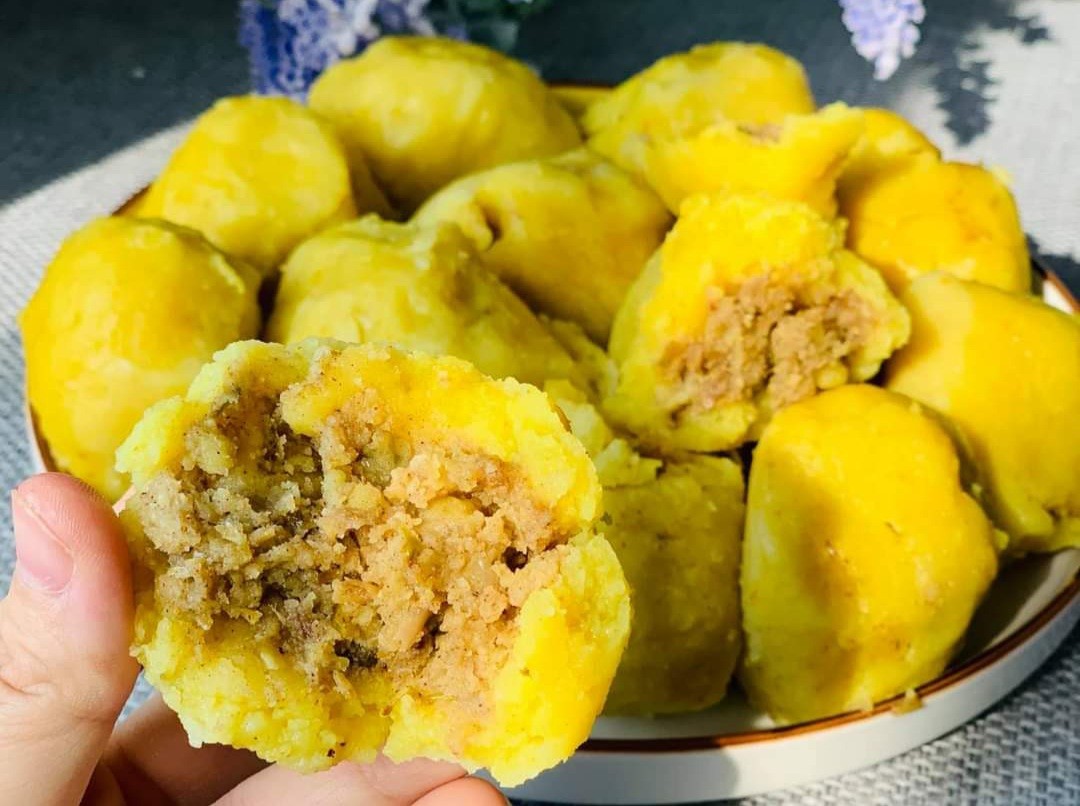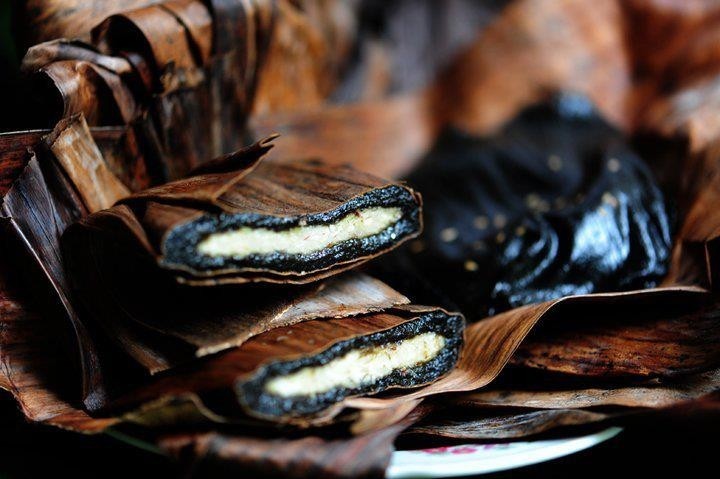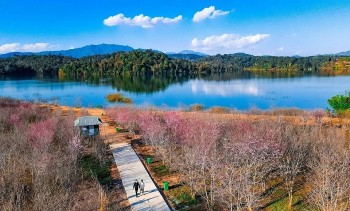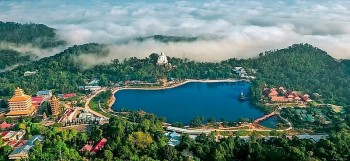Must-try Traditional Cakes For Food Lovers In Thai Binh
Thai Binh is off the tourist track in Vietnam. This little city is best known for its famous monk, who lived in the 12th century and cured an emperor of leprosy. The pagoda, located a few miles from town, honors the monk and boasts a beautiful bell tower. Other religious sites in the area include Tran Temple and the Le Quy Don ancestral grounds.
In between exploring these spiritual sites, tourists can enjoy Thai Binh's delicious cakes. The region boasts several different cakes with mouth-watering flavors.
Banh Nghe (Tumeric Cake)
Banh Nghe (Turmeric cake) is a unique cake of the Thai Binh region in general and Phu Coc village (Kien Xuong district) in particular. To make the tastiest cakes the right ingredients are essential. Thai Binh rice must be used to make a dough that is not too wet and not too dry.
 |
| Banh Nghe (Turmeric cake) is a unique cake of the Thai Binh region in general and Phu Coc village (Kien Xuong district) in particular. Photo: Thanh Nien |
To make the cake, the rice is soaked in water for 4-5 hours and then ground into a half-wet and half-dry dough. Turmeric is ground down and its essence is filtered into a turmeric juice. The turmeric is added to the dough and the mix is steamed.
The filling includes diced onions, minced pork scraps, a touch of cinnamon powder, and fish sauce, then fried in a skillet. Then it’s a matter of bringing the dough and the filling together.
The dough should be divided into small balls about the size of a chicken egg. The filling is pushed into the center of the ball. They are then steamed on fresh banana leaves for 30 minutes.
After wrapping the cake into a round or oblong shape, it will be steamed and cooked. When eaten, turmeric cake has a greasy taste mixed with the strong aroma of turmeric and cinnamon. It is enjoyed not only by adults but also children because of its soft, fragrant rice and turmeric. It is also very nutritious.
Banh Cay (Cay Cake)
Thai Binh is commonly known for its immense rolling fields, but a tastier treat it is home to is the Banh Cay, or Cay cakes, made of sticky rice, sugar, Gac (gardenia fruit), sesame seeds, carrots, mandarin peel, and lard.
 |
| The craft of making “cay” cake has been handed down through generations in Nguyen village. Photo: Dien may XANH |
Born more than 200 years ago, Banh Cay - a famous specialty of Nguyen village (Nguyen Xa commune, Dong Hung district) was once a product presented to the king.
Legend has it that in the old days, “Cay” cake was made by Nguyen Thi Tan, a daughter of the Nguyen Cong clan, and served only during the lunar New Year. Lady Tan was born in 1724 and was ordained as a mandarin in 1739. She created a new cake with five spices to offer to the King who later named the cake “cay” because it is the color of a fiddler crab’s egg. Since then, the Nguyen villagers have made “cay” cake to offer to the King during Tet. The craft of making “cay” cake has been handed down through generations in Nguyen village.
After cooking, all the ingredients are pressed into a mold and cut into pieces. The techniques sound simple but not everyone can make “Cay” cake. Every family has its own secret recipe.
Banh Gai (Thorn Leaf Cake)
Among Vietnamese traditional cakes, Banh Gai (glutinous rice cake blackened in a concoction of edible leaves) is perhaps the most multipurpose because it can be used as an offering at wedding ceremonies, as gifts at longevity parties, as a snack, appetizer, or even a dessert.
 |
| Banh Gai is made all year round but mostly in spring and winter. Photo: Nhan Dan |
Banh Gai is made all year round but mostly in spring and winter. And it can be preserved unspoiled for a long time.
The fragrant Gai leaves covered with smooth white down are an indispensable ingredient. Fresh leaves are washed, boiled, squeezed out, and pounded. All items must be removed. Then the dry leaves are mixed and ground to powder.
High-quality glutinous rice is soaked in water for about two hours, sifted, and then ground into flour. Then, the rice flour is mixed with Gai powder in a 5:1 ratio, and ground peanuts and molasses are added. This mixture is used to prepare the cake crust.
 | Explore Pa Khoang – The Largest Lake In Dien Bien Province Pa Khoang Lake, the largest reservoir in Dien Bien province, is nestled among majestic natural surroundings and boasts a refreshing climate and abundant vegetation. |
 | Explore Mountain Destination Near Ho Chi Minh City Ba Ra, Ta Cu, Ba Den, Cam, and Chua Chan are the famous mountains near Ho Chi Minh City, with many attractive activities for tourists ... |
 | The Ritz Herald Recommends 9 Hidden Gems To Visit In Vietnam Take a look at the top 9 beautiful “hidden gems” places around Vietnam with untouched nature and pristine beauty, recommended by U.S. newspaper The Ritz ... |
Recommended
 Handbook
Handbook
Vietnam Moves Up 8 Places In World Happiness Index
 Handbook
Handbook
Travelling Vietnam Through French Artist's Children Book
 Multimedia
Multimedia
Vietnamese Turmeric Fish among Best Asian Dishes: TasteAtlas
 Handbook
Handbook
From Lost to Found: German Tourist Thanks Vietnamese Police for Returning His Bag
Popular article
 Handbook
Handbook
Prediction and Resolution for the Disasters of Humanity
 Handbook
Handbook
16 French Films To Be Shown For Free During Tet Holiday In Vietnam
 Handbook
Handbook
Unique Cultural and Religious Activities to Welcome Year of the Snake
 Handbook
Handbook







